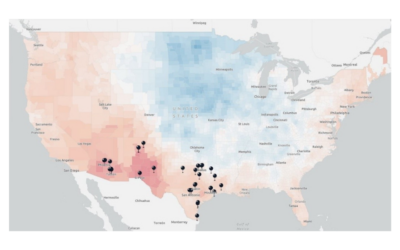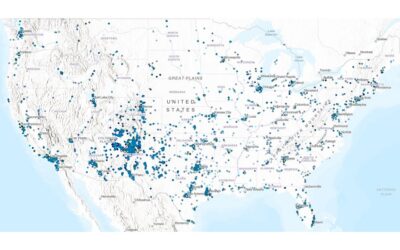By Paul Noland
Google “inflation” these days and you’ll come face-to-face with an endless stream of articles outlining our current economic woes and an equally limitless set of lists on what you should do about it. Currently, at about 8% annually, U.S. inflation is running at a 40-year high. That means most people in today’s workforce have never experienced this level of inflation during their career and may be wondering how best to manage it.
First, let’s review what inflation is and what causes it. As you may remember (from the one economics course you took in college), inflation occurs when there are too many dollars chasing too few goods. As consumers perceive those goods to be difficult to find, that demand pushes prices up. The same can also be true of the raw materials that goods are made from (think lumber in the construction of a new house). Furthermore, as prices rise consumers demand higher pay to compensate, and the cycle continues.
Defining inflation is the easy part. The hard part is getting back to optimal levels of inflation as defined by the Federal Reserve (about 2% per year). Without going into a lot of detail, inflationary challenges will only be remediated when:
1.. Supply chain issues are largely corrected
2. The money supply is constrained due to raising interest rates
It’s very difficult to say when these might occur, but most experts forecast we’ll be in a period of higher inflation for several more months or even years.
As the leader of an organization, what can you do about it?
Not surprisingly, possible actions boil down to three opportunities:
1. Increase your prices
2. Decrease your costs
3. Retain your employees
Not magic or rocket science, is it? Well, the magic, and often the science, are in HOW to increase prices, reduce costs, and retain employees without negatively impacting the guest, associate, or animal welfare functions of your organization.
So, what actions can you take without negatively impacting your operation?
Raise Prices
Given the important mission that zoos and aquariums serve, keeping admission rates affordable is often viewed as a key component of fulfilling that mission. However, in this period of high inflation, increased revenue through gate pricing is both necessary and appropriate. A few steps to take include:
1. Benchmark similar experiences in your area. One thing to consider is to look at the prices of other family attractions and experiences to get an informal gauge of how relatively accessible you are. Nationwide, price increases for these types of venues have grown considerably in the last few years—in some cases by as much as 30-50% since COVID restrictions were eased. A good starting point is to look at venues in your area to establish some benchmarks. Consider researching:
- Cinemas
- Amusement parks
- Botanical gardens
- Museums
- Attractions
- Trampoline parks
- Adventure experiences (zip lines, etc.)
- Sporting events
- Theater and concert tickets
While the experience at your facility is unique, this type of benchmarking will give you an idea of what families are spending for a traditional leisure experience. You may find that you’re more of a “bargain” than you intend to be.
2. If you aren’t prepared to make overall pricing increases, consider a pricing structure that’s differentiated by tiers. This might include:
- Weekday vs. weekend pricing
- High vs. low season pricing
- Eliminating or reducing the child discount (reference our analysis of this very topic here)
- Reducing the number of general admission discount programs offered
- Evaluating group discounts
3. Look for opportunities to create/enhance/upsell experiences. As consumers return to pre-COVID activities, it appears many are willing to spend extra money to ensure a great experience. This includes “VIP” and other upsell options. It’s a great way to drive revenue where the guest self-selects the choices that are right for them. These can include unique food and beverage experiences, animal interactions, guided tours, etc. They need to be priced accordingly and the full total cost of providing the experience needs to be evaluated against what can be charged. These should be high-margin products.
4. Don’t forget your membership program. Based on decisions you make on your admissions pricing structure, you should revisit the value proposition of your membership program. Traditionally, zoos look at the Membership Price Ratio. It’s calculated by taking the price of a family membership and dividing it by the cost of two adult and two child general admission tickets. Basically, it shows how many times a family needs to visit to “break-even” on the cost of a family membership. Zoo Advisors analyses in both 2015 and 2021 showed that this ratio can vary widely. Is your general admission pricing increasing faster than your membership pricing resulting in a membership program that is “too good” of a bargain?
5. Food and beverage/merchandise pricing needs focus. Since food and beverage and retail programs have significant direct costs associated with them, their pricing should be reviewed. Supply chain issues have made both food ingredients and imported goods prices rise significantly. Labor costs have increased as well. It’s important to maintain the historical margins these areas have generated that will likely require price increases.
Reduce Costs
As a former colleague of mine once said, “it’s a lot more fun to raise prices than it is to cut costs. However, cost cuts are certain—price increases are not.” The point here is that when you raise prices, the consumer may reject those price increases, in which case you accomplished nothing. Cost reductions are generally known and can be counted on to “work,” baring a large negative reaction from your guests. This means your approach to combating inflation will require both raising prices and cutting costs. Given that, here are few ideas of options to review:
1. Start by increasing visibility to your costs. This includes pulling apart your profit and loss to understand what’s really driving your cost base. What items are seeing the highest year-over-year growth? What items are growing much faster than other items?
2. Next, look at your product offering. Just trimming around the edges may not get you any real savings. Better to focus in on your entire product offering and decipher what parts of it the guests may not truly value. That could include:
- Simplifying your F&B offerings. Reduce the number of choices on the menu, especially focusing on items that have a lower margin now due to rising costs.
- Reducing merchandise SKU’s. Often with merchandise, there’s an 80/20 rule. A large portion of your profit is driven by a small portion of your offering. This may prove difficult given supply chain and shipping issues. However, it should be reviewed as availability starts to return to normal.
- Substitutions. Are there alternatives to items you purchase that can save money?
3. Optimize how work gets done. Labor is likely one of your fastest growing cost centers. Consider some changes that might help:
- Eliminate low-value-add work. Operating practices are rarely, if ever, “zero-based.” They represent years of individual decisions. Often, when reviewed in a new light, activities can be identified which can simply go away. Think wholistically about the entire cross-functional organization.
- Take a hard look at operating hours. Would some strategic reductions in operating hours, especially in periods of low demand, create labor and other expense reductions?
4. Review vendor relationships. It’s a difficult time, given supply chain issues, to leverage vendors for better pricing. But it should still be pursued. One option is to see if existing vendors would offer better pricing in exchange for a longer-term commitment on your part. Also, try new vendors who may be more willing to offer an attractive price to secure a new customer.
We’ll give you time to digest these recommended actionable options for raising prices and reducing costs. Next week we’ll focus on factors affecting employee retention and steps to consider to ensure employees know they’re contributing and feel valued. The combination of all three of these opportunities will help to combat the current economic state.





